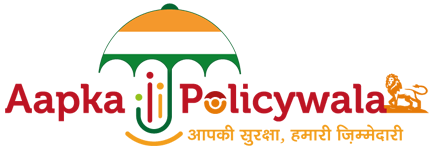Insurance is one of the big main financial aspects that insure your vehicle when anything happens to it. There are primarily two broad categories, one is Third Party Insurance and another one’s Own Damage Insurance. Through this guide, you will come to know in fine detail what own damage insurance is and how it features on a greater scale of vehicle insurance. The difference between own damage and third-party insurance, together with various terms such as OD and TP, would be understood in this chapter of learning what all these terms mean in the context of insurance.
What is Own Damage Insurance?
There is a type of insurance called own damage insurance; it exclusively covers the damages to your own vehicle. The policy is required since, under this scheme, you receive compensation in case any damage to your vehicle is caused due to accidents, natural calamities, theft, vandalism, and so on. Such insurance provides financial assistance to the policyholder when repairs or replacements of the vehicle to its earlier state, without huge losses to the owners, are in demand.
Own Damage Insurance Meaning
The meaning of own damage insurance can be fathomed if one thinks about the various risks one’s vehicle faces day in and day out. This policy shall pay for the repair costs, should your vehicle incur any damage. It shall be different from third-party insurance, which pays only for the damages or injury caused to another person. Own damage insurance concerns itself with the policyholder’s vehicle alone.
What is OD and TP in Insurance?
OD in insurance terminology stands for Own Damage and TP stands for Third Party. Put them together, they form the backbone of comprehensive vehicle insurance policies. While OD covers the damages of your vehicle, TP saves you from financial liabilities arising due to causing damage to someone else’s property, vehicle, or in case of bodily injury or death.
Own Damage: It covers the cost of repair or replacement of the vehicle in case of any damage.
Third Party: TP is a cover that compulsorily is required by law in most countries, which include India. Damages to a third party, which may be their vehicle or property or personal injury claims arising due to an accident where you are at fault, are covered under it.
What is TP in Insurance?

Here’s a more detailed version, while keeping the length reasonable:
TP, or Third-Party Insurance, covers liabilities for damage or injury caused to others, but not your own vehicle. It’s mandatory under the Motor Vehicles Act in many countries, ensuring third parties receive compensation in case of an accident. This coverage is essential for protecting others affected by accidents, as discussed earlier.
What does 1 Year Own Damage and 5 Year TP mean?
Another common variant of insurance is the 1-year Own Damage with 5 years Third Party Insurance. This will combine both into one deal that meets the on-road legal requirements while protecting the vehicle owner’s own car, too.
1-Year Own Damage: It means insurance coverage for your vehicle that is applicable for a period of one year. Beyond this period, the policy needs to be renewed.
Fifth-Year Third Party Insurance: The statutory requirement stipulates that a TP has to be issued for all new vehicles for a period of five years. In this way, the third parties have a cover for extended periods without the irritant of frequent renewals.
It will, therefore, prove to be of considerable use in the case of vehicle owners who may wish to keep third-party covers for the long term and hence avoid administrative issues while one’s own damage insurance is renewed yearly, based on their requirement.
OD Policy Meaning
The OD policy is part of the vehicle insurance scheme that provides coverage to one’s own car against damage. One can take an OD policy as a standalone policy or together with a comprehensive policy that includes third-party insurance. With a standalone own-damage (OD) policy, coverage applies only to damages to your vehicle caused by accidents, theft, natural calamities, or man-made disasters.
Own Damage Policy Means
In simple terms, this policy provides coverage for repair or replacement costs due to sudden incidents that damage the vehicle. This does not cover any liability arising out of damages or injury caused to a third party; this is the role of third-party insurance.
Liability Policy Period
Policy period of Liability: The duration for which the third-party liability insurance is effective. Third-party liability usually lasts for one year and requires annual renewal, although some countries mandate a five-year policy for new vehicles.
Read More : Why You Should Never Travel Without Insurance?
Own Damage Cover: What’s Covered?
Own damage cover in vehicle insurance is all about insuring against all the various kinds of risks your vehicle and/or you, as an owner, is exposed to. Some of the major elements usually covered under one’s own damage insurance include:
Accidental Damage: Insures to pay the cost of repairs against damages caused by accidents or collisions.
Theft: Insure your vehicle against theft to protect it in case someone steals it.
Natural Calamities: As the name suggests, it covers damages caused by floods, earthquakes, storms, and other natural calamities.
Man-Made Disaster: Insurance covers damages caused by riots, vandalism, or even terrorist acts.
Fire and Explosions: Insurance protects against losses from fire, explosions, or even lightning.
Towing Charges: Many of them also cover towing charges of the vehicle from the accident site to any repair garage.
Own Damage and Third Party Insurance-Differences
The fundamental difference in principles between own damage and third-party insurance relates to the nature of coverage provided. Now, let me elaborate on some elaboration for your details.
Own Damage Insurance:
- These will cover damages to the vehicle insured.
- Accidental damage, theft, fire, and natural/artificial calamity.
- It is not compulsory by law; hence it is optional.
- Comprehensive insurance costs more in premiums compared to third-party insurance.
Third-Party Insurance
It provides compensation in case of damage or injury caused to any third party, whether another vehicle or a pedestrian, or even property. In most places, it is compulsory by law to at least have third-party insurance. “The policy doesn’t cover vehicle damage or loss, nor does it pay for the driver’s medical expenses. Since the coverage is limited, the premium costs less.
Tenure of Own Damage Cover Own damage cover generally bears a tenure of one year and is renewable every year. Although insurers can offer multi-year own-damage plans for greater convenience, most vehicle owners renew their own damage insurance annually to align the coverage with the vehicle’s increasing age or their changing needs. The vehicle’s make, model, age, and location of use influence damage insurance premiums.
Conclusion
Own damage insurance refers to one of the major understandings for any vehicle owner, especially in those cases when one is prepared to create a financial cocoon around oneself in case accidents or damages caused suddenly with one’s vehicle are to be faced. It is basically a basic insurance coverage that supplements third-party insurance and extends financial protection in case there is an accident to the vehicle owner and others.
An insurance policy that pays for damages to your vehicle.
1 Year Own Damage 5 Year TP insurance policy will help in meeting the regulatory requirements with comprehensive cover for the vehicle owner.
These terms will help you choose the right policy, balancing mandatory protection and optional own-vehicle coverage.

